
All sensory play activities are developmental activities that can be offered to children practically year-round. When temperatures soar, we can find refreshment in a variety of sensory-stimulating games. We offer several interesting and easy-to-follow activities – perfect for the hottest days of the year. Sensory play for children in the summer guarantees great fun and joy for the little ones.
Summer games for kids with ice, or "Mom, how did you fit the ice in the balloon?"
Ice games are perfect for extreme heat. There are many options, from the quickest to prepare, using simple ice cubes, to pre-made, icy surprises. Discovering various treasures in the ice brings children great joy and guarantees hours of fun.
- Water
- Freezing containers – ice trays, silicone cupcake molds, bowls
- Balloons
- Various sensocuda that we can hide in the ice: sequins, beads, wildflowers or flower petals, figurines, blocks, etc.
- Pipette
- Hot water
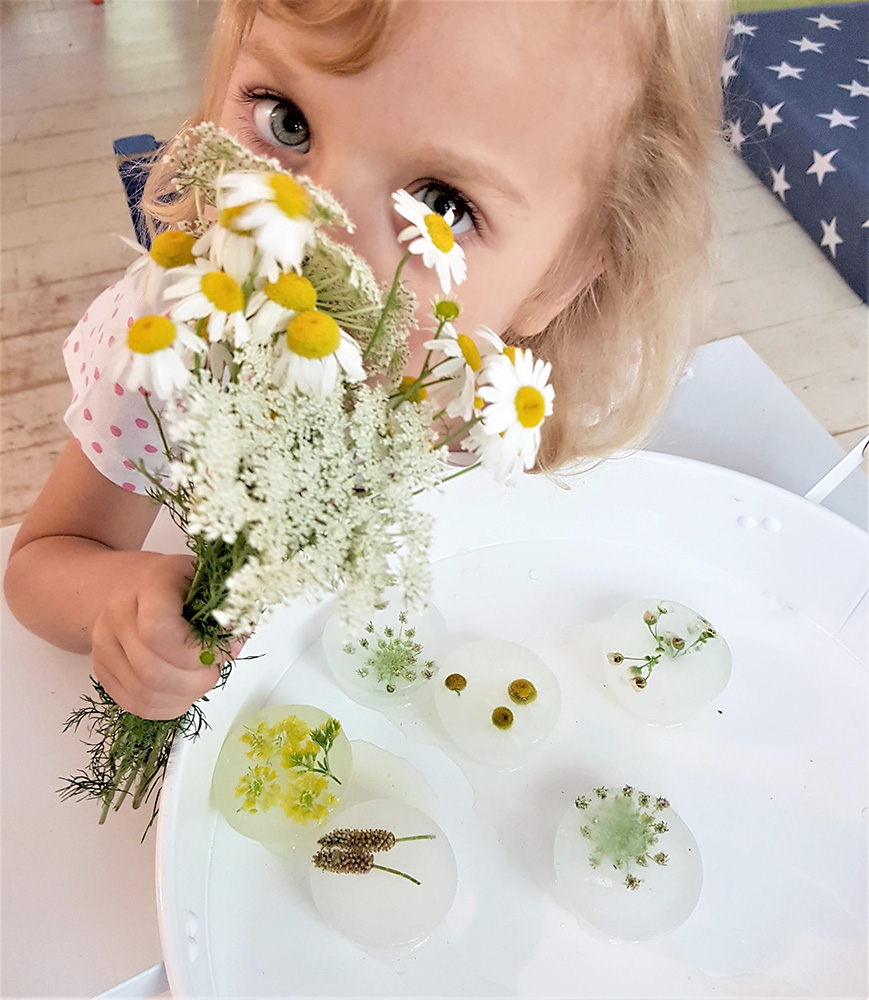
Game scenario
Pour water into the containers and place various sensory treasures. These can be beads, crystals, blocks, or just natural treasures like flowers, leaves, sticks, etc. For the balloon version, first fill the balloon with small items, then fill it with tap water, tie it, and freeze for a few hours. Once frozen, remove the items from the containers and serve them to the children for play . By pouring cold and warm water from a pipette, cup, or sprayer, children release the surprises hidden in the ice.
In another variation, we can prepare just the ice cubes or nuggets without any hidden treasures, but add various dyes to the water before freezing . Observing the melting process of the colored ice will also be a fascinating activity.
What do children gain from playing with ice?
Playing with ice stimulates the tactile system (thermal play), proprioception, vision, and hand-eye coordination. It's an excellent exercise in patience. It's also a great introduction to the world of physics and experimentation. Questions like "How do you hide a flower in an ice cube?" or "How do you fit a large block of ice into a small balloon?" are the perfect pretext for a conversation about the different states of water.
Sensory games for children in the summer with colored water
Water play may seem trivial, but it's one of the most beloved activities for all children . All you need is water and a few gadgets, which you can surely find in your kitchen or children's room. It's worth carving out space for this type of play even in your apartment (if you don't have a balcony or garden), because contact with water is simply enormous fun for children.
- Water
- Water container (bowl, bathtub, litter box)
- Food dyes
- Containers, cups, molds, funnels, strainers, tongs, bottles
- Various sensocuda: stones, sequins, beads, figurines, fish, etc.
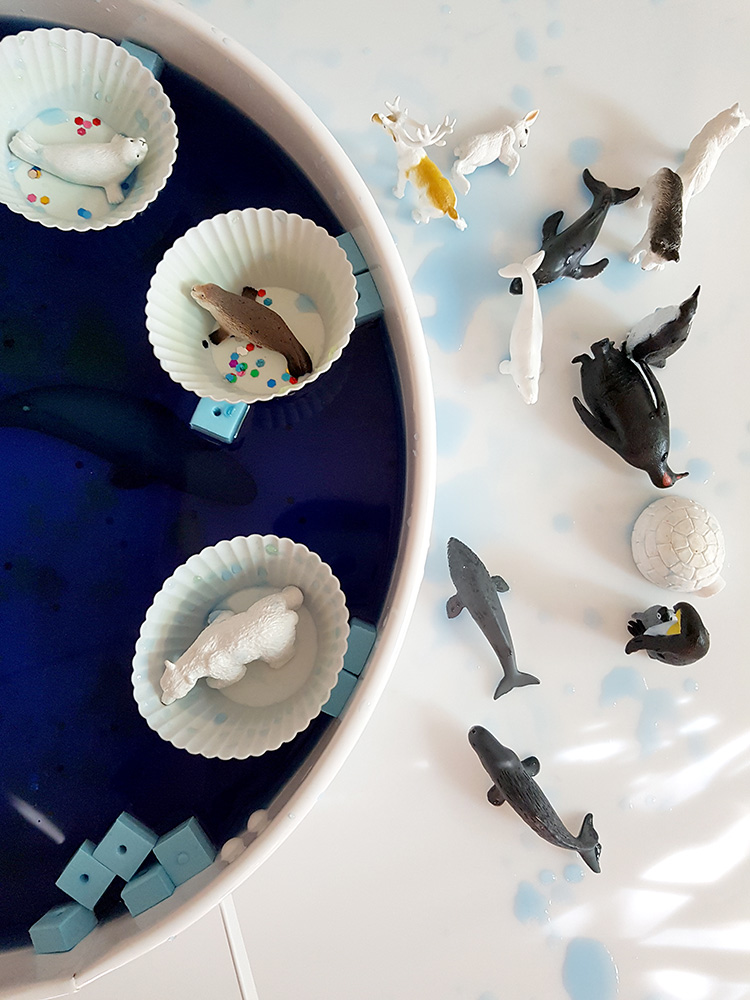
Game scenario
Simply pour water with a little food coloring into a large bowl, a deep tray, a container, an inflatable pool, or even a bathtub. Children will eagerly and intuitively begin experimenting with water – pouring, fishing out objects, testing what floats and what sinks. This is a game that will keep any toddler occupied for hours. There are countless variations – it all depends on the creativity of the child and… the parent. Children can practice fishing out small objects with a strainer or ladle, or precisely pouring water into smaller containers.
What do children gain from playing with water?
It's also an opportunity for speech therapy exercises: blowing bubbles through a straw (remember, don't let your child bite the straw between their teeth) or blowing on floating boats (made of paper, cork, bark, or toothpicks). It's also a great setting for all sorts of themed games with animal figurines or blocks. Water-based activities help develop our sense of touch, proprioception (deep sensation), vision, concentration, and hand-eye coordination. Nothing could be simpler.
Sensory summer fun for kids with jelly
Cold jelly, straight from the fridge, is one of our favorite treats served on hot days. It's also an incredibly interesting sensory experience. Easy to prepare, fabulously colorful, and with limitless possibilities. Its texture is intriguing, and you can dip literally anything into it .
Materials needed
- Powdered food jellies
- Water
- Containers in which we will create jellies: silicone baking molds, glass jars, bowls
- Sensory treasures such as beads, sequins, glitter, figurines, blocks, pasta
- Fruit or other food products
- Optional cutlery, tongs or other aids for removing sensory treasures
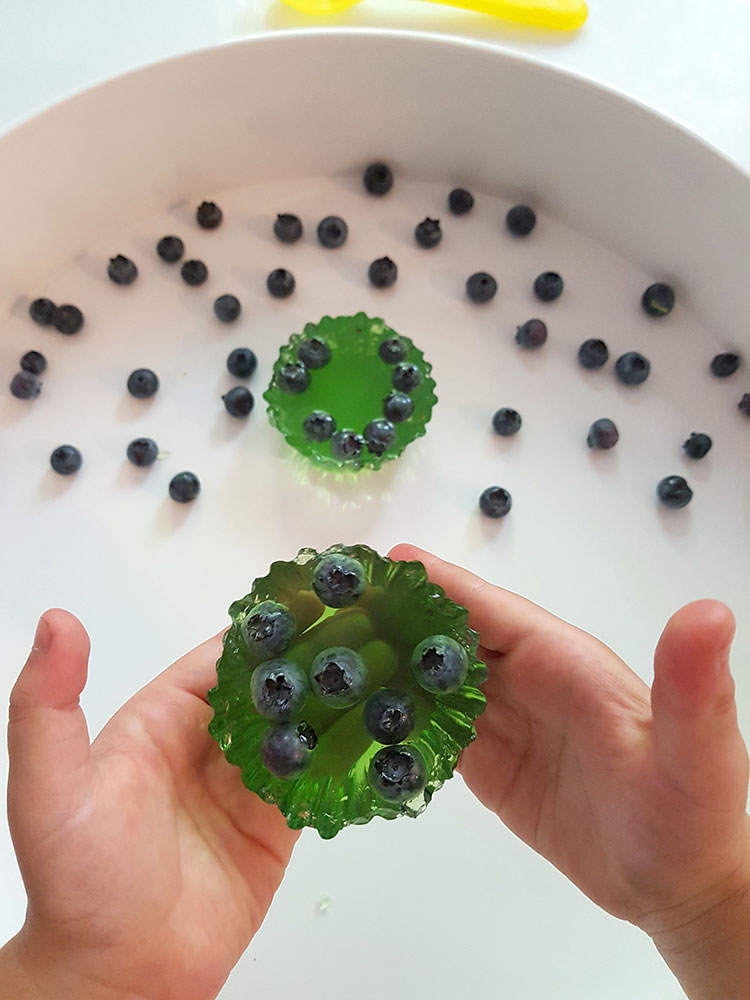
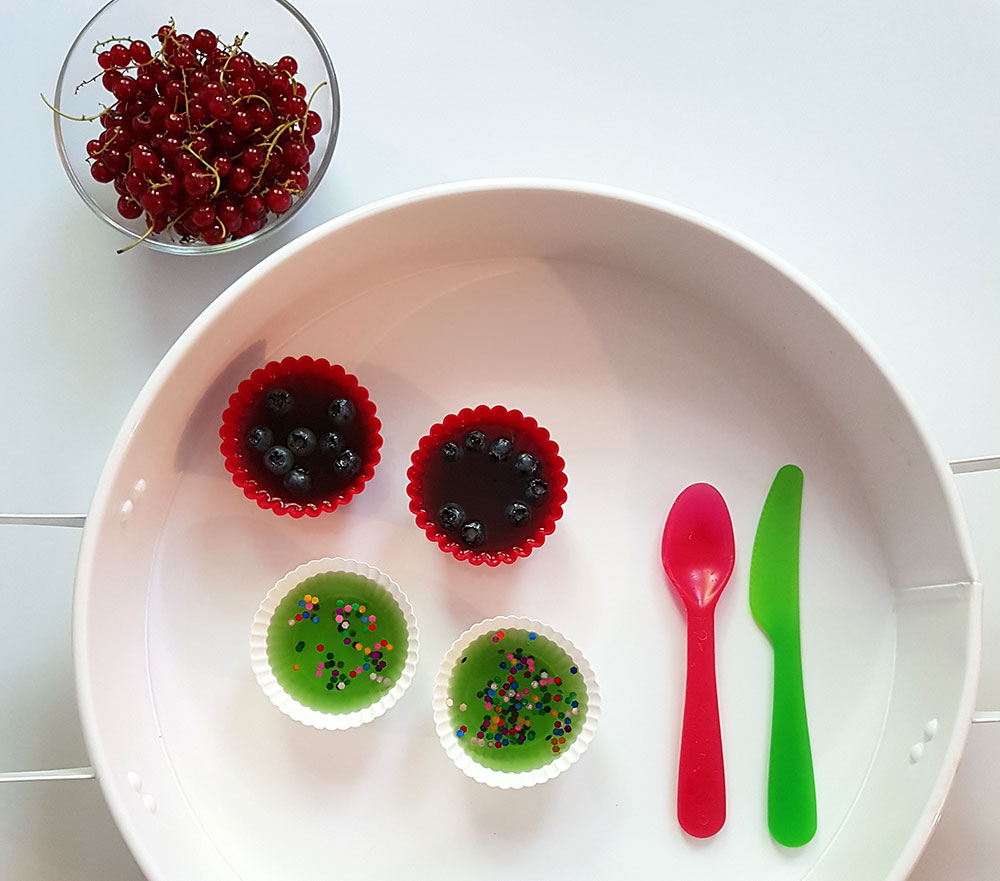
Game scenario
Prepare the jelly according to the package directions, pour it into containers, and sink various treasures into the jelly for them to fish out. There are two versions of the jelly. For the edible version (ideal for little ones), you can hide seasonal fruits like blueberries, currants, raspberries, etc. For the play-only version, you have complete freedom – add figurines, blocks, glitter, etc. Then, place the containers with the jelly in the refrigerator and let them set for a few hours.
The game involves removing small pieces from the jelly. We exercise little hands by stirring, crushing, and squeezing. We develop fine motor skills and coordination, for example, by cutting the jelly with a knife. If your child doesn't want to touch the jelly with their hands, we encourage them to remove pieces with a spoon, tongs, or other grasping tools. Of course, you can also smell and taste the jelly—especially the version with edible elements, this is highly recommended.
What do such sensory games give children?
This game stimulates multiple senses – touch, including thermal sensations, proprioception (deep sensation), sight, smell, and taste. It's a great activity for desensitizing children who don't like getting dirty, but also for picky eaters to familiarize themselves with fruits and vegetables.
Summer activities for children - Artificial snow for children, or an expedition to the North Pole
And when we've truly had enough of the heat, we can always travel to Antarctica and play with fake snow. The dough itself is quite cool and velvety to the touch, but we can always put it in the fridge for a while for an extra 'cool' effect. In this case, we only need two ingredients found in every kitchen, so our dough is completely edible and safe. Even if a child eats a little of it, it won't hurt them.
Materials needed
- Potato flour
- Cooking oil
- Container, play tray
- Senso treasures such as animal figurines, beads or cake molds
- Optional cake flavoring
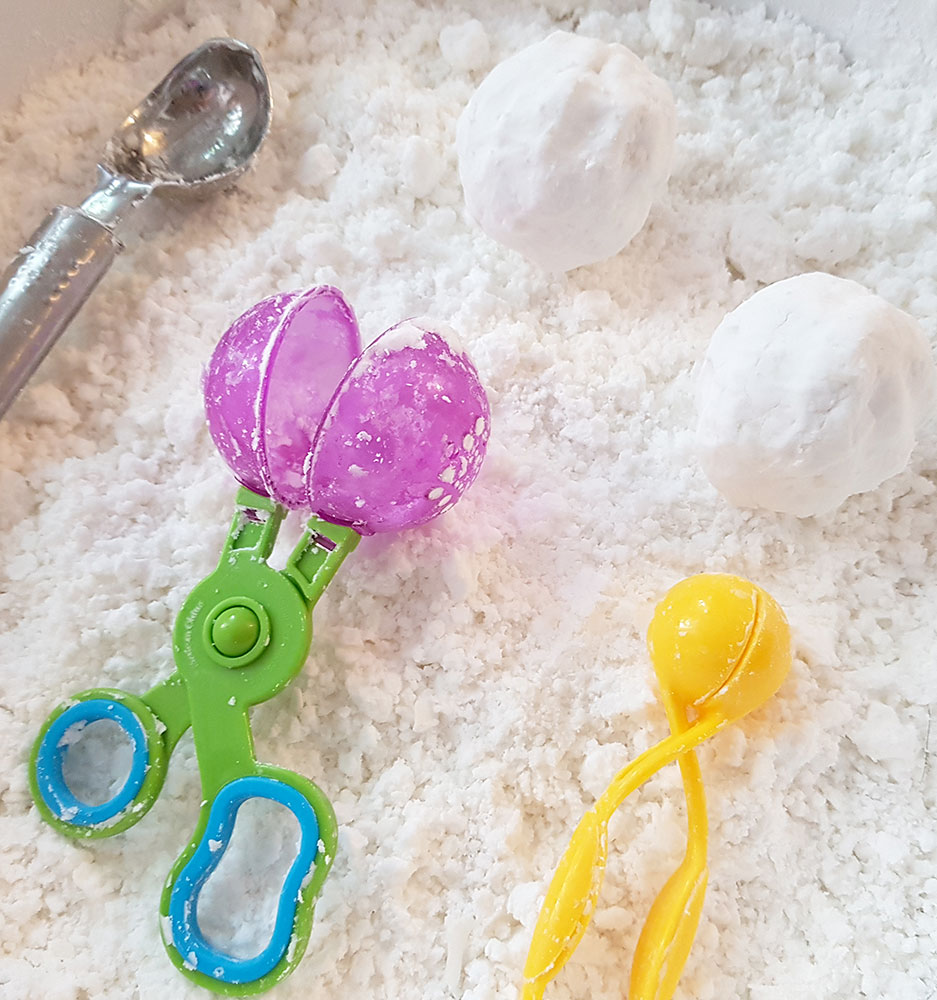
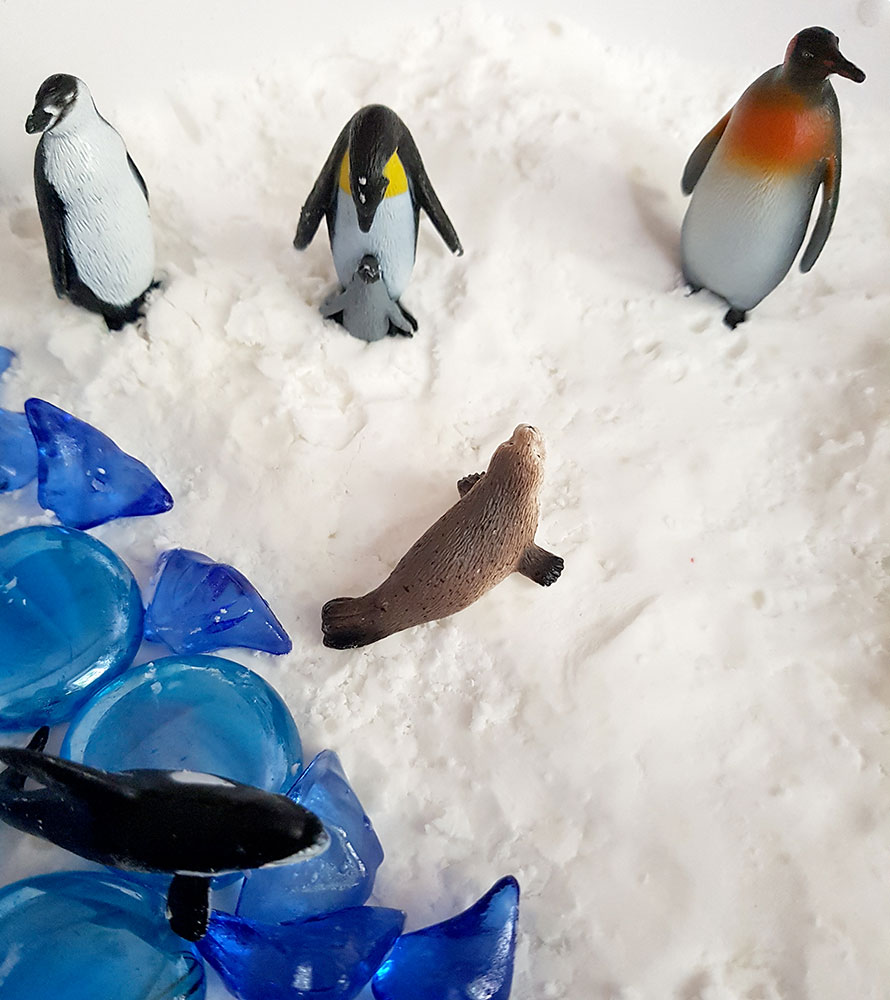
Recipe for artificial snow and a fun scenario
Simply combine the ingredients, gradually pour the oil into the flour, kneading it in and checking for the right consistency. The resulting mixture should be loose, but still manageable to form a ball. Adjust the proportions to your preference – the more oil, the more slippery and compact it becomes. The mixture also smells wonderful when you add cream or vanilla flavoring. This stimulates the senses of touch, proprioception, smell, and even… hearing (the mixture gently creaks when crushed, much like natural snow).
This is a great idea for free play with building snowmen, dusting, or making footprints, or it's an interesting idea for a thematic and educational game – a good opportunity to discuss the species of animals living in Arctic zones. Children can also unleash their creativity by preparing, for example, a special winter model.
What do children gain from playing with artificial snow?
Playing with edible and gluten-free snow has another bonus for adults - its ingredients make our hands exceptionally smooth after playing :-) So we encourage you to play with your children - we combine pleasure with usefulness.
Summer Activities for Kids - Surprise Your Senses with Non-Newtonian Fluids
Playing with non-Newtonian fluids is incredibly popular, and not just with children ;-) Adults are equally fascinated by its surprising properties. At rest, it behaves like a liquid, flowing through your hands, but when you apply force to it (by squeezing, pressing, or punching it), it begins to behave like a solid. To make this extraordinary mass, you only need two kitchen items.
- A large bowl or litter box
- Potato flour 1 kg
- Water 0-6/0.7 l
- Food dyes
- Additionally – sensory treasures: shells, stones or figurines, strainers, molds
Non-Newtonian fluid: recipe and fun scenario
First, prepare a non-Newtonian liquid in a container. The proportions are: 1 kg of flour and approximately 0.6-0.7 liters of water, which is best added in small portions to achieve the desired consistency. You can add food coloring to the liquid and then add various sensory treasures, which can be fished out by hand or using strainers and various grippers. This activity strongly engages the sense of touch and tactile sensation. Pouring the non-Newtonian liquid is a very engaging and relaxing activity. It's worth allowing children to immerse not only their hands but also their feet in it.What do children gain from playing with non-Newtonian fluids?
Preparing the dough is incredibly simple, so it's worth involving the little ones. They'll love the ability to measure flour and water and the freedom to experiment with its consistency. Made from natural ingredients, the dough is safe for toddlers, and for a preschool version, you can add any coloring or glitter you like.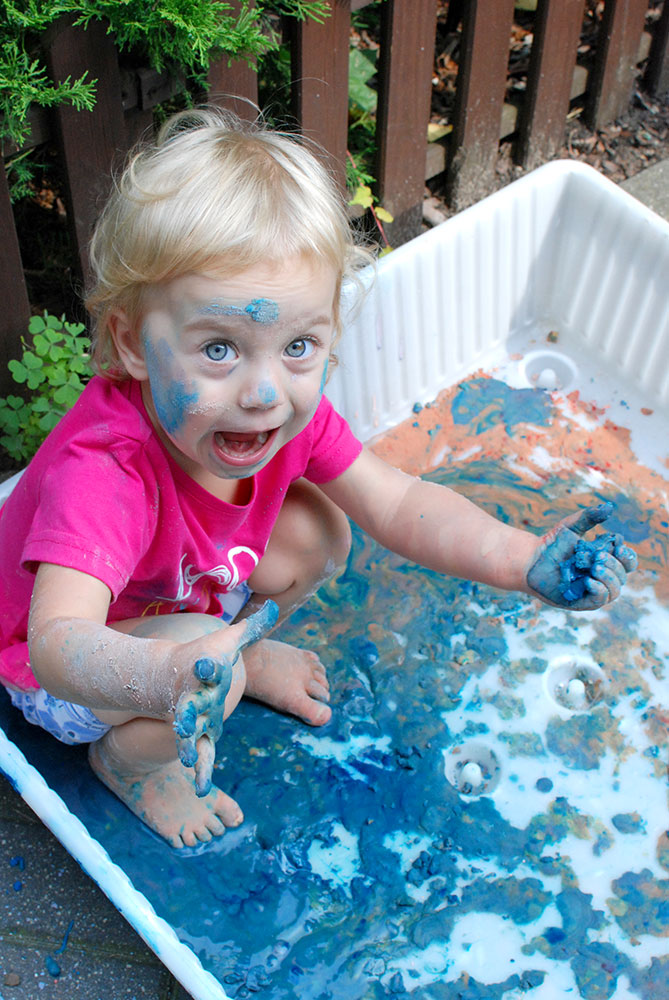
Sensory Play - a series of educational videos and tutorials from Endo
Check out our other sensory games that will make your child's time more enjoyable and have a positive impact on their development:
- Painting on foil [VIDEO]
- Dinosaur Excavations 0 Sensory Sand Fun [VIDEO]
- Non-Newtonian fluid [FIM]
- Fruit and Vegetable Stamps [VIDEO]
- Trip to the Moon - Space Sensory Tray
- Halloween Sensory Tray


Podziel się:
Challenges of young parents and how to deal with them
What to pack for a seaside trip with a child? - List